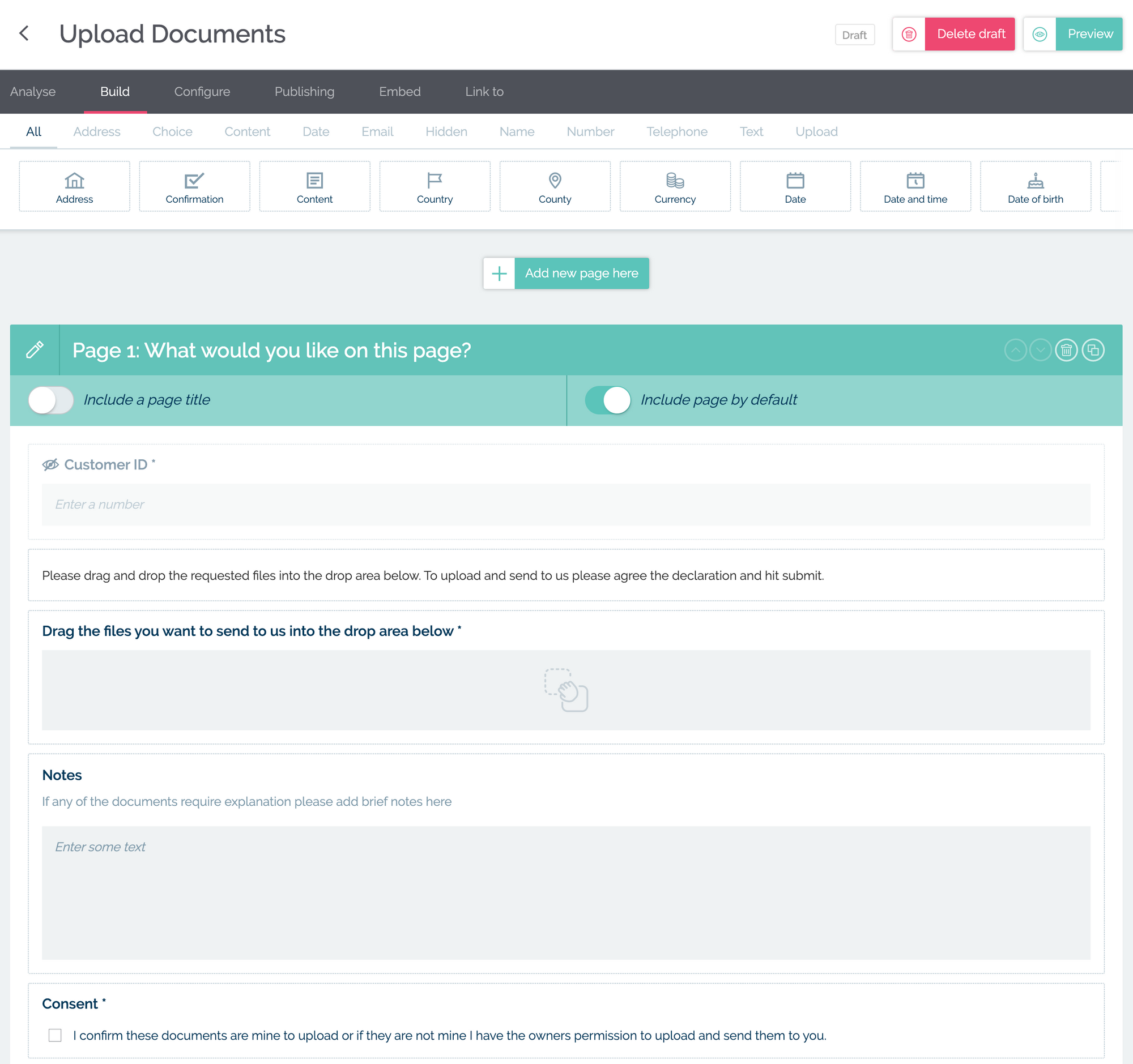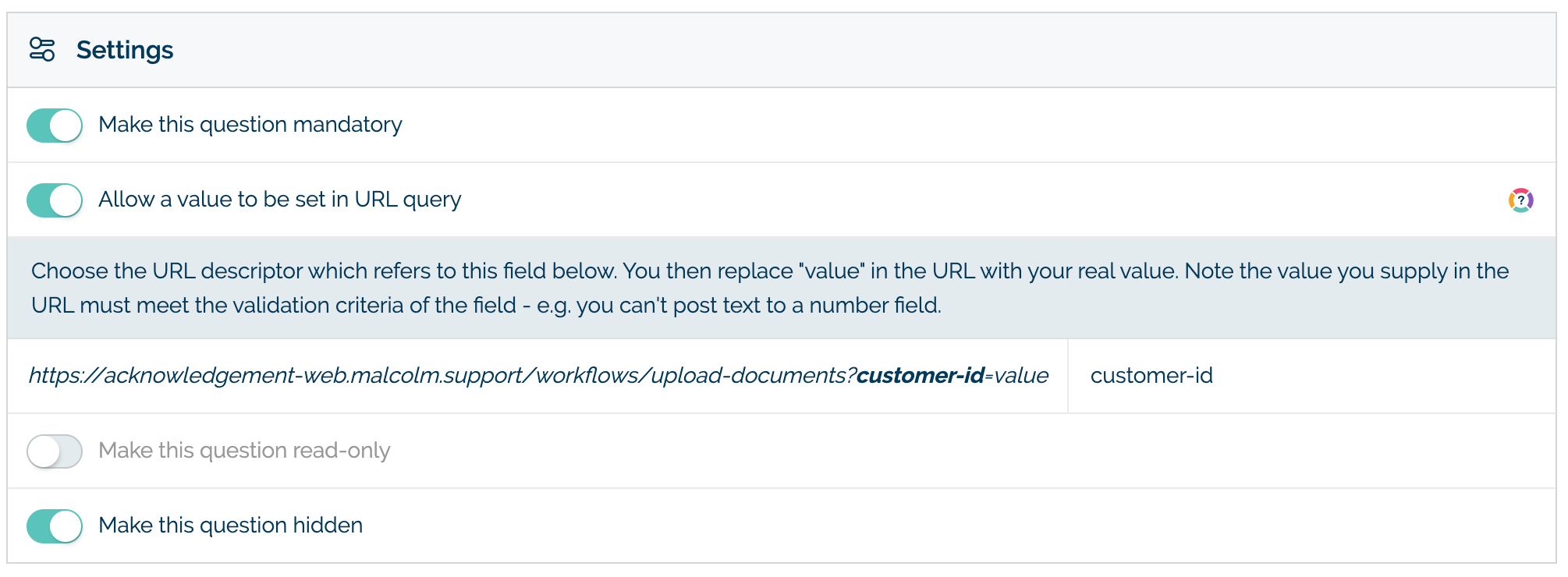In this post we’re going to show you a really useful, powerful and downright cool way to use Malcolm! Workflows to supplement your existing systems and make your life a lot easier.
Via a clever combination of hidden fields and the ability to populate those hidden fields via a URL you can - in a matter of minutes - create slick forms and user journeys for all sorts of tasks then have the submitted data put exactly where you need it.
Let us explain!
As you probably already know you can create great looking forms / user journeys in Malcolm! (we call these Workflows) and surface them (put them in front of your users) in lots of different ways: link to them, embed them into your website, create an overlay or a floating widget.
But did you know you can also create hidden fields and populate those fields via the URL you use to load the Workflow?
Here’s how to set this up:
Create a form (Workflow) as usual and use the Workflow builder to add fields to record choices or collect information from your user. Also create a field for a unique ID (UID) - this could be a user/customer number or perhaps an order reference or a case ID - any sort of reference that will let you link up the collected data to other records you hold in other systems.

In the MyMalcolm Workflow Builder click on the field to bring up the settings dialogue and set the question to be mandatory, settable via URL query and hidden. You’ll then be able to set this value by the URL you use to link to the Workflow - it’s even possible to vary the descriptor you use within the URL from this settings dialogue.

Once you’ve set this up and published your Workflow you are ready to go. You just need to pass the UID in the URL that calls the Workflow. The user submitted information and their UID will be stored by Malcolm!
Then simply export the data when needed and use the UID to link back to your customer or order or case ID etc. You could also use a Malcolm! integration to pass the same information into other systems, for example a CRM system. Or post back to your own system via a webhook!
And there you have it - in a couple of minutes you’ve massively increased the functionality you can offer to customers and made a big efficiency gain.
